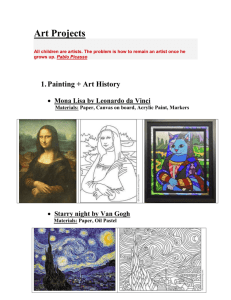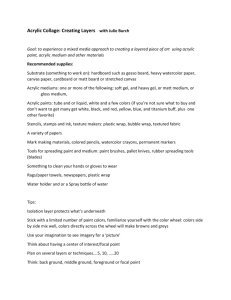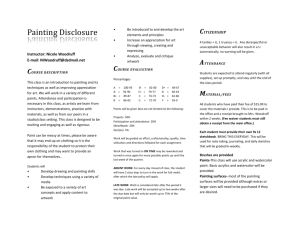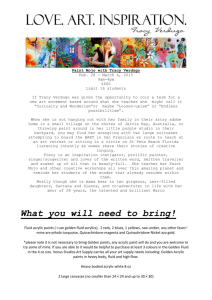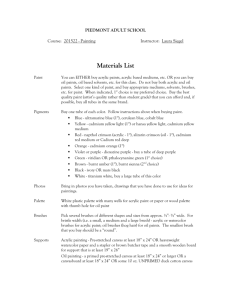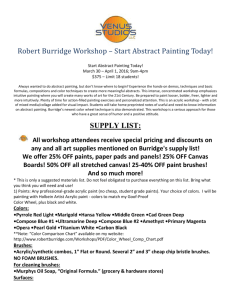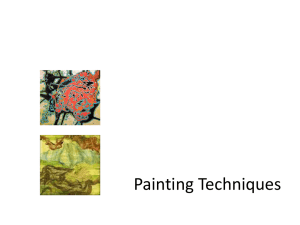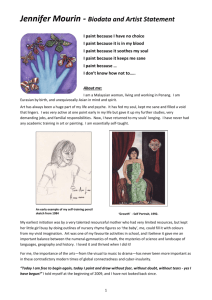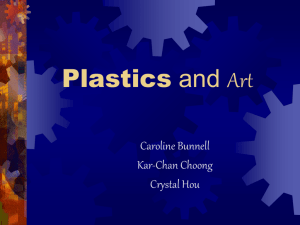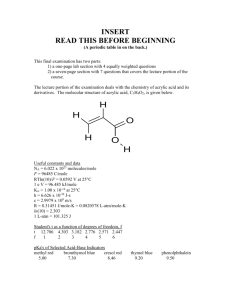Simi Valley Art Association Acrylic Demonstration: Samantha Fields
advertisement
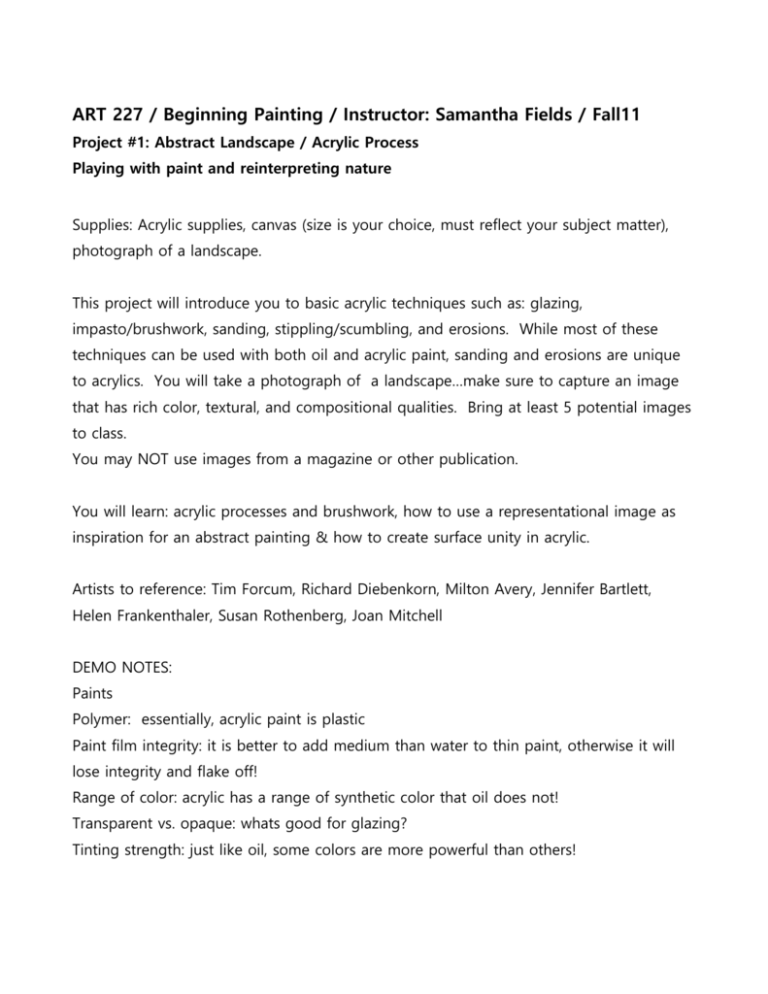
ART 227 / Beginning Painting / Instructor: Samantha Fields / Fall11 Project #1: Abstract Landscape / Acrylic Process Playing with paint and reinterpreting nature Supplies: Acrylic supplies, canvas (size is your choice, must reflect your subject matter), photograph of a landscape. This project will introduce you to basic acrylic techniques such as: glazing, impasto/brushwork, sanding, stippling/scumbling, and erosions. While most of these techniques can be used with both oil and acrylic paint, sanding and erosions are unique to acrylics. You will take a photograph of a landscape…make sure to capture an image that has rich color, textural, and compositional qualities. Bring at least 5 potential images to class. You may NOT use images from a magazine or other publication. You will learn: acrylic processes and brushwork, how to use a representational image as inspiration for an abstract painting & how to create surface unity in acrylic. Artists to reference: Tim Forcum, Richard Diebenkorn, Milton Avery, Jennifer Bartlett, Helen Frankenthaler, Susan Rothenberg, Joan Mitchell DEMO NOTES: Paints Polymer: essentially, acrylic paint is plastic Paint film integrity: it is better to add medium than water to thin paint, otherwise it will lose integrity and flake off! Range of color: acrylic has a range of synthetic color that oil does not! Transparent vs. opaque: whats good for glazing? Tinting strength: just like oil, some colors are more powerful than others! Paint additives 1. Modeling Paste- Adds thickness to paint, and is used to create texture. Can be used as a surface as well. Can be sanded. 2. Gel- there are a variety of gels, soft, light, heavy, ect. These terms refer to viscosity, the more viscous the gel, the higher the peaks it will make. There are used to create transparent textural areas, and to thicken paints. Can also be used to extend paints. 3. Texture Gel- there are dozens of texture gels on the market, from glass beads to sand and stucco. You can make your own by adding sand, beads, ect. to regular gel or gesso. 4. Resins- All of the varnishes, gels, and mediums are made from acrylic resin, which is a plastic polymer. Essentially, they are all the same with a variety of finishes and viscosities. Varnish will be thin, while medium will be thicker. The finishes are generally matte and gloss. 5. GAC- This is GOLDEN acrylics line of polymer mediums. There are a variety of them in different viscosities. The equivalent in Liquitex is called gloss medium. Additive Techniques 1. Glazing- The MOST important thing to learn about acrylic painting! Add paint to GAC or medium to thin it out and create transparent glazes. It will enrich the color and add depth. 2. Brushwork: stippling, scumbling, loose work, daubing 3. Collage 4. Impastp Subtractive Techniques 1. Wet Sanding- You can use automotive s wet/dry sandpaper to work subtractively 2. Erosions- You can play with drying times to erode acrylic 3. Inscriptions- you can scribe into wet or semi wet paint and glaze over it 3. Scraping Instructions: Homework: Gesso five pieces of paper cardboard to practice the demonstrated techniques before you choose an image. Techniques are: glazing, stippling, scumbling, loose brushwork, daubing, collage, impasto, sanding, erosion, and scraping. They can be practiced in unison. Painting: Once you have a grasp on the techniques and what they offer, you will make an abstracted landscape painting using at least five of the above techniques.
